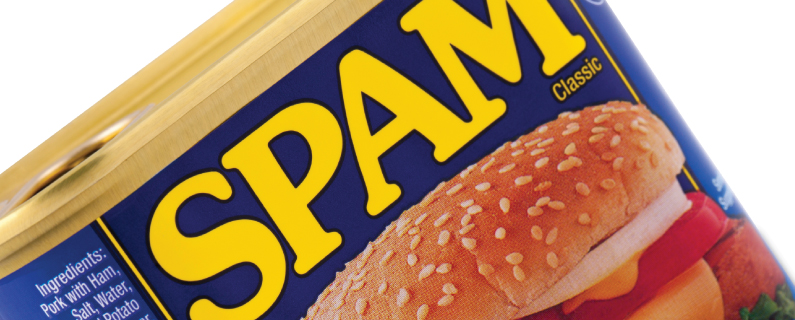
You can spend hours upon hours crafting the world’s greatest email newsletter. It can have engaging content, superb design and salient calls-to-action, but one tiny misstep in choosing your subject line can send you to the dreaded spam folder – the email graveyard filled with Nigerian princes and free Xanax. Don’t fret though, with a few tips you can be sure your email will always hit the inbox you’re aiming for.
The majority of spam filters don’t publicly release their criteria for filtering, for the obvious reason of keeping this information out of the hands of spammers. However, they check mostly for the same things, including the source domain of the email, the type of program used to deliver it and the content of the email.
So what should you watch out for?
“Trigger” Words
Probably the most obvious way to get marked for spam is by using words in the subject line or body copy that set off red flags in a filter. Some of these trigger words are obvious: any email with “viagra” or “100% Free” in the subject line will almost always be tossed outright. There are also some not-so-obvious triggers as well – “Free Installation,” “Order Now,” or “Compare Rates” can make blips on the radar of spam filters. Bear in mind that not all trigger words are made equal. One spam filter program, the open source Spam Assassin, will assign points to certain words or phrases, giving more points to those words which most highly correspond with common spam messages. For example, it will assign the phrase “urgent matter” with a spam score 0.28 points, but the phrase “money-back guarantee” receives a whopping 2.05 points, making it much more likely to get the email filtered to spam.
HubSpot has a great list of commonly-filtered spam words, though as time goes on, the tendencies of spammers change, so no list of words to avoid will ever be 100% accurate.
Context of your Content
In addition to your word choice in both your subject line and email body, how you use those words can also make or break your chance at getting into the inbox. If your subject line is repeated verbatim in the body of your email, it could be a strike against you. The more a word or phrase is repeated, especially if it’s a “trigger” word, also makes your email more likely to be filtered.
Embedding links in your email body can also be a difficult path to traverse. For example, if you’re using a click-tracking program that directs users outside of the domain of the link, spam filters may see it as a potential phishing attempt and block the email from the user. To combat this, ensure your email links are direct and transparent.
Miscellaneous Body Content
The following are some common miscellaneous reasons that your email may be caught in a spam filter. If you’re doing any of these, stop it right now:
- Multiple font styles and colors used in the body.
- Excessive use of punctuation, especially exclamation points or dollar $igns!!!!
- USING ALL CAPS
- Using the word “test” in the subject line.
- Having broken or invisible HTML tags in your email. This is a technique spammers use to try to bypass filters.
With these tips, you can greatly reduce the chances of ending up in the spam folder. If you’re still having trouble making that happen, it may come down to trial and error using a spam checker like the built-in tool in Constant Contact..
Now that you’ve learned how to get delivered to the inbox, the next step is making the best of your presence there. Check out the 6 Steps to Email Success and start hitting email pay dirt.

